A December Letter to Clients: Some Taxing Issues and Market Round Up
Looking to year-end
I know it’s a busy time. But it’s not too soon to start thinking about taxes. In prior conversations, we have discussed year-end planning. But let’s concentrate on taxes before the new year begins.
Many questions about the new administration have come my way, including questions about new tax proposals. Joe Biden’s plan is aggressive, but it may not get out of the starting gate if the Republicans hold the Senate. As you know, two early January runoffs will determine the fate of the upper chamber.
However, there is bipartisan support for what might be called The SECURE Act 2.0. Recall that the SECURE Act, which recently passed Congress, updated rules and regulations governing retirement accounts.
There are plenty of tweaks that we might see. For example, might RMDs for IRAs rise to 75? Could we see bigger catch-up provisions? Or greater flexibility for individuals 60 and older who are attempting to save for retirement?
Maybe, but let’s not jump too far into the future. Any possible changes are in the planning stage. Congress is more likely to focus on Covid relief early next year. Besides, comprehensive bills take time to wind through Congress. Instead, let’s focus on tying up loose ends as the year comes to a close.
I want to stress to you that it’s my job to partner with you. I can’t over emphasize this, and I would be happy to review your options. As with any tax matters, feel free to consult with your tax advisor.
9 tax facts and tips to save you money
1. Tax brackets and tax rates have changed. Every year, the tax brackets for taxable income are adjusted based on the rate of inflation. Table 1 illustrates your marginal tax bracket based on taxable income.
Table 1: Tax brackets for 2020
Rate | For Single Individuals | For Married Individuals Filing Joint Returns | For Heads of Households |
10% | Up – $9,875 | Up – $19,750 | Up – $14,100 |
12% | $9,876 – $40,125 | $19,751 – $80,250 | $14,101 – $53,700 |
22% | $40,126 – $85,525 | $80,251 – $171,050 | $53,701 – $85,500 |
24% | $85,526 – $163,300 | $171,051 – $326,600 | $85,501 – $163,300 |
32% | $163,301 – $207,350 | $326,601 – $414,700 | $163,301 – $207,350 |
35% | $207,351 – $518,400 | $414,701 – $622,050 | $207,351 – $518,400 |
37% | $518,401 or more | $622,051 or more | $518,401 or more |
Source: Tax Foundation, IRS
2. The increased standard deduction has simplified filing for many. The standard deduction for married filing jointly rises to $24,800 for tax year 2020, up $400 from last year.
For single taxpayers and married individuals filing separately, the standard deduction rises to $12,400, up $200 from 2019. For heads of households, the standard deduction will increase to $18,650, up $300.
The personal exemption for tax year 2020 remains at 0, as it was for 2019. The elimination of the personal exemption was a provision in the Tax Cuts and Jobs Act. (IRS)
3. You may be eligible to take a $2,000 tax credit for each child. The credit is available to parents as long as your child is younger than 17 years of age on the last day of the tax year, generally Dec 31. It begins to phase out at $200,000 of modified adjusted gross income for single filers. The amount doubles to $400,000 for married couples filing jointly.
4. Limitations on itemized deductions. If cash expenses that are eligible to be itemized fail to top the standard deduction, skip Schedule A and take the standard deduction. It’s that simple.
If you itemize, please be aware that state and local income taxes, property taxes, and real estate taxes are capped at $10,000. Anything above cannot be written off against income.
However, the IRS said it will grant a workaround for some taxpayers.
Taxpayers that use pass-through entities (PTE), including S-corporations, some limited liability companies, and partnerships may qualify depending on your state. This work-around is not available for sole proprietors and single-member LLCs.
According to the American Institute of CPAs, the PTE may deduct the entity’s state and local income taxes as a tax on the business at the federal level and avoid the $10,000 cap.
State proposals would also provide that the owner may claim a credit on the owner’s state income tax return for the owner’s distributive share of the taxes paid by the PTE.
It’s a complex maneuver that is only allowed by a few states (NOTE: please see articles above, which list states that are included), but it can help reduce your tax liability if you qualify.
For charitable contributions, you may generally deduct up to 50% of your adjusted gross income, but 20% and 30% limitations apply in some cases. (IRS)
In 2020, the IRS allows all taxpayers to deduct the total qualified unreimbursed medical care expenses for the year that exceeds 7.5% of their adjusted gross income
5. Penalties have been eliminated for not maintaining minimum essential healthcare coverage, according to the Tax Cuts and Jobs Act.
6. Estates of decedents who die during 2020 have a basic exclusion amount of $11,580,000, up from $11,400,000 for estates of decedents who died in 2019.
The annual exclusion for gifts is $15,000 for calendar year 2020, as it was in 2019.
7. The maximum credit allowed for adoptions for tax year 2020 is the amount of qualified adoption expenses up to $14,300, up from $14,080 for 2019.
8. Changes to the AMT – the alternative minimum tax. Tax reform failed to do away with the alternative minimum tax (AMT), but it snags far fewer people.
The AMT exemption amount for tax year 2020 is $72,900 and begins to phase out at $518,400 ($113,400 for married couples filing jointly for whom the exemption begins to phase out at $1,036,800).
The 2019 exemption amount was $71,700 and began to phase out at $510,300 ($111,700, for married couples filing jointly for whom the exemption began to phase out at $1,020,600).
It’s confusing, but most tax software programs run both calculations for you.
9. There is a 20% deduction for business owners. The new law gives “flow-through” business owners, such as sole proprietorships, LLCs, partnerships, and S-corps, a 20% deduction on income earned by the business.
This is a very valuable benefit to business owners who aren’t classified as C-corps and can’t benefit from 2018’s reduction in the corporate tax rate to 21% from 35%.
Individual taxpayers and some trusts and estates may be entitled to a deduction of up to 20% of their net qualified business income (QBI) from a trade or business, including income from a pass-through entity.
In general, total taxable income in 2020 must be under $163,300 for single filers or $326,600 for joint filers to qualify.
The deduction does not reduce earnings subject to the self-employment tax.
There are limitations to the new deduction and some aspects are complex. Feel free to check with your tax advisor to see how you may qualify. Most tax software programs will run the calculation, too.
The points above are simply a summary. You may see provisions that will benefit you. You may also see potential pitfalls. If you have any questions or concerns, let’s have a conversation.
Cruising at 30,000 feet
November was a standout month for stocks, as illustrated by Table 2. The major US stock market indexes recorded new highs, including the smaller-company Russell 2000 Index, which had stellar month.
Table 2: Key Index Returns
| MTD % | YTD % |
Dow Jones Industrial Average | 11.8 | 3.9 |
NASDAQ Composite | 11.8 | 36.0 |
S&P 500 Index | 10.8 | 12.1 |
Russell 2000 Index | 18.3 | 9.1 |
MSCI World ex-USA** | 15.2 | 0.7 |
MSCI Emerging Markets** | 9.2 | 8.1 |
Bloomberg Barclays US Aggregate Bond TR | 1.0 | 7.4 |
Source: Wall Street Journal, MSCI.com, MarketWatch, Morningstar
MTD returns: Oct 30, 2020—Nov 30, 2020
YTD returns: Dec 31, 2019— Nov 30, 2020
*Annualized
**in US dollars
In particular, the better-known Dow Jones Industrial Average eclipsed 30,000 for the first time ever. It has been an impressive rally from March’s low, when the economy was locked down, unemployment was soaring, and the economy was contracting at its fastest rate in history.
The DJIA was published in 1896, according to the Library of Congress—Business References.
The index first topped 100 in 1906, reached 1,000 by 1972, 10,000 by 1999, and 20,000 by 2017, according to LPL Research and data from the St. Louis Federal Reserve.
Landmarks have come at a faster pace given that the percentage gain to reach the next key marker declines. No one knows when we might hit 40,000, but a 33% advance is what’s needed to push the Dow to the next milestone.
In a broader context, what does this tell us? Stocks have a long-term upward bias, which is a piece of the well-diversified plan we recommend for you.
History repeats itself
Of course, markets don’t climb in a straight line. Volatility is inevitable. That goes without saying. March’s decline was short, but violent.
However, as we’ve repeatedly witnessed, market corrections and bear markets eventually come to an end, and major market indexes climb to new highs.
Catalysts during November
A bitter election is over. We have a new president. Whether you are jubilant, bitterly disappointed, or somewhere in between, a big unknown has been erased.
Talk of civil strife pre-election didn’t materialize. We have a degree of certainty where uncertainty once existed. The election removed a hurdle for investors, and the prospect we may have divided government also cheered investors.
In addition, the announcement of at least two vaccines for Covid-19 received a very warm welcome from investors.
Let’s back up a moment. So far, the economic recovery has been far more robust than nearly every economist has anticipated. Yet, problems remain.
With new vaccines, beaten-down sectors such as leisure, hospitality, travel, and the broad-based service sector have a fighting chance to recover next year.
Though we may see more volatility, the straightest line to your financial goals hasn’t changed. The financial plan is still your roadmap forward.
I hope you’ve found this review to be educational and helpful. Once again, before making any decisions that may impact your taxes, please consult with your tax advisor.
Let me once again emphasize that it is my job to assist you. If you have any questions or would like to discuss any matters, please feel free to give me or any of my team members a call.
As always, I’m honored and humbled that you have given me the opportunity to serve as your financial advisor.








